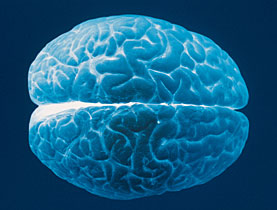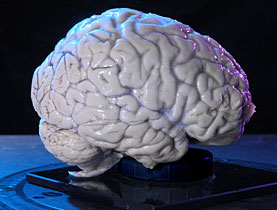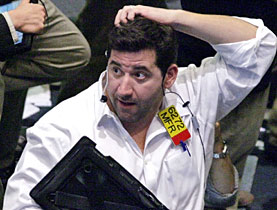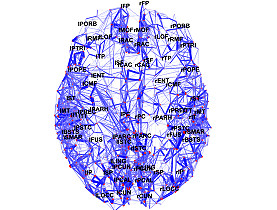Scientists unlock secrets of human memory

Studying slices of young rat brains, a team of researchers at Geneva University has come a step closer to understanding how humans remember and learn.
While scientists have known for years that learning can forge bonds between brain cells, they have been unable to understand the precise nature of that circuitry.
Now a team led by Dominique Müller, a professor at the university’s department of neuroscience, has discovered that our brains send information through a network that adapts to our experiences.
Brains build new pathways as needed and eliminate less travelled ones in the process.
That could help explain why a student might do well in a test but then forget the material if it isn’t used – the “use it or lose it” rule.
“The act of learning, especially during development, has serious consequences on the way a brain physically organises itself,” Müller told swissinfo. “That organisation helps build a network that lets the brain function optimally.”
Building bridges
To understand the physical nature of memory and learning, Müller and his team spent three years studying slices of young rat brain tissue kept alive in cultures for a month at a time.
Human brains and rat brains behave similarly on a cellular level, as neurons in both connect to each other via microscopic bridges called synapses.
A single brain cell can have 10,000 of these bridges, and which ones are used – and how – helps determine how we learn, the researchers found.
To simulate the learning process, researchers stimulated rat neurons with electrical shocks and chemical baths to produce short, powerful bursts between synapses that occur in the brain when we learn. They used dyes to monitor how neurons bonded to each other.
Surprisingly, researchers found that neurons engaged their synapses along no set route but selectively. Synapses that helped the neuron by relaying information survived. Those that did little for it were ignored and replaced.
Most intriguing of all, the neurons created new bridges as needed, often next to those synapses that were already productive.
“The stimulating we did was the equivalent of spending about two seconds learning something,” Müller said. “Even that triggered a reorganisation of the circuitry in the brain. So even a very short event can have very dramatic consequences.”
What it means
Younger brains tend to be able to reorganise themselves and adapt more readily than older brains, and scientists call that ability “cerebral plasticity”.
On a practical level the work in Geneva sets the stage for how scientists can tackle a range of mental problems including schizophrenia.
“This study gives us something to work with,” said Anthony Holtmaat, a molecular neural biologist at Geneva University. “[The authors] have helped narrow down the physical components of memory.”
While gaps remain in understanding exactly how external stimuli – such as the smell of fresh pie or the sound of your grandmother’s voice – can etch neurological pathways into our minds, the study brings scientists closer to grasping how a brain functions.
The information could one day help doctors to mitigate mental deficiencies caused by strokes, schizophrenia and autism.
“That’s obviously still far in the future,” Müller said. “The important line of research now is to find the mechanisms that could help establish connections and override those deficiencies.”
swissinfo, Tim Neville
The brain’s main centre for learning is the hippocampus, which is located deep within the brain. This was the region Müller and his team of researchers focused on. Because of the location, using live rats was not an option.
The study did not look at how to learn or improve memory. Instead it focused on how the brain builds and rebuilds neurological networks based on what is happening.
Anthony Holtmaat, a molecular neural biologist at Geneva University, equated learning and the resulting network to walking through a forest. The more you follow the same path the more that path becomes accessible. Other less-used paths will become overgrown.
But this study found that those paths do not always appear in the same locations. Rather the brain will build new paths next to those that are well used to create a network that is constantly in flux.
In general terms, someone who learns to play the piano might develop neurological paths for exceptional finger dexterity. Those paths will be replaced by other functions if they go unused.

In compliance with the JTI standards
More: SWI swissinfo.ch certified by the Journalism Trust Initiative



You can find an overview of ongoing debates with our journalists here. Please join us!
If you want to start a conversation about a topic raised in this article or want to report factual errors, email us at english@swissinfo.ch.